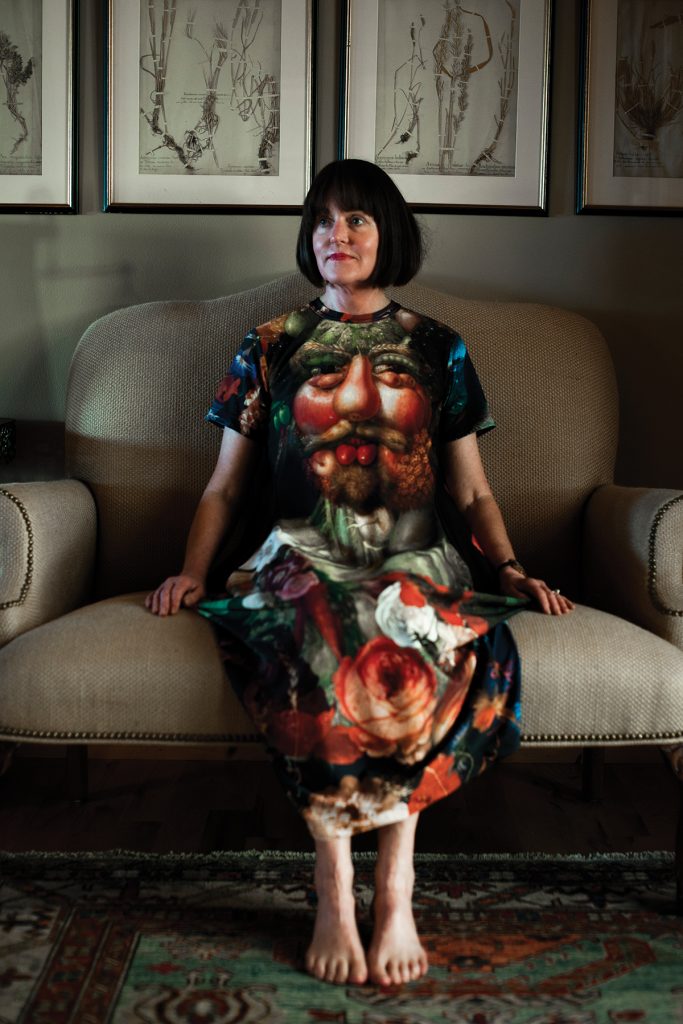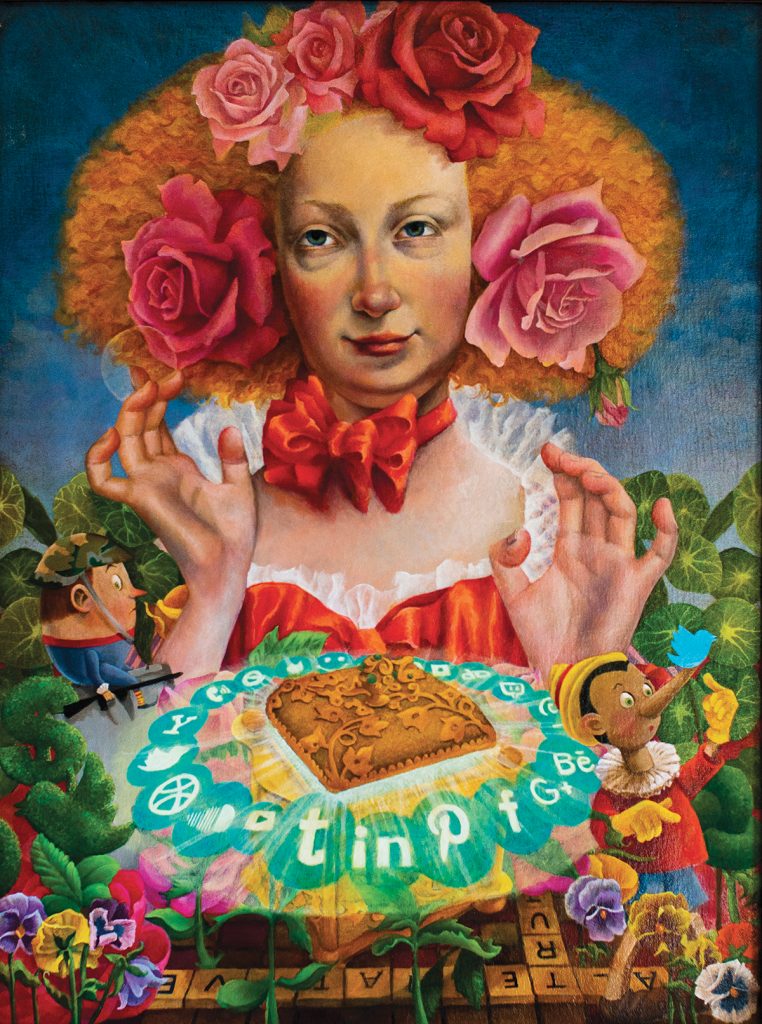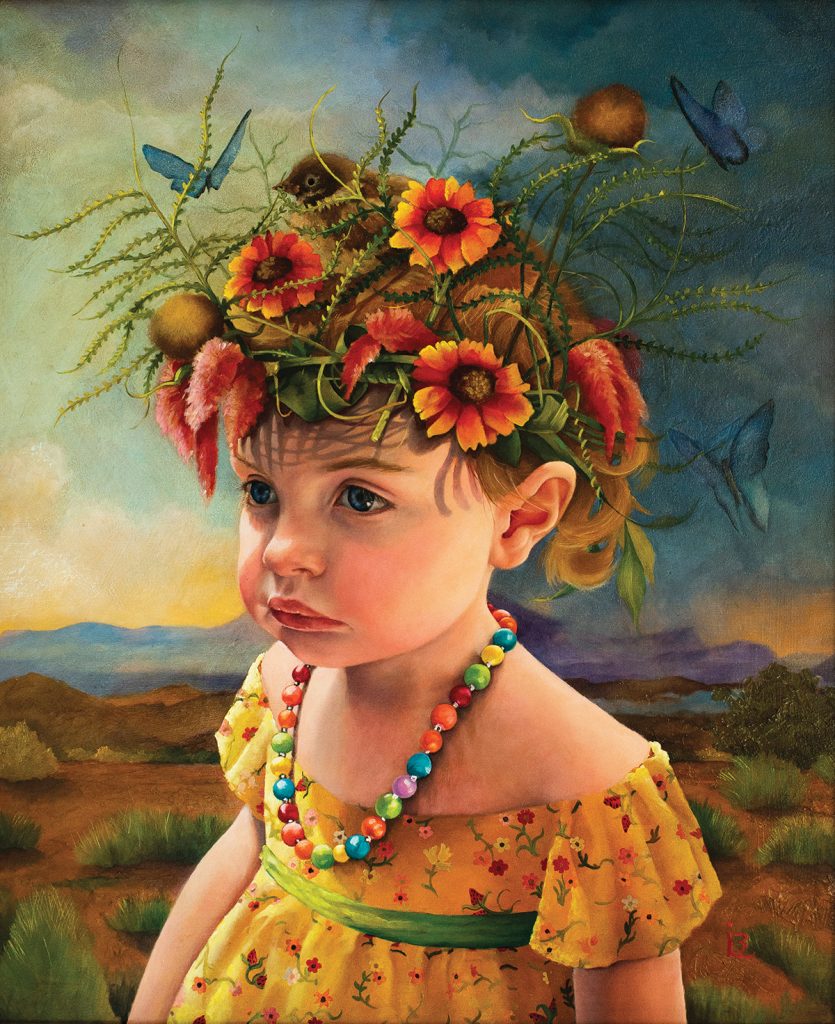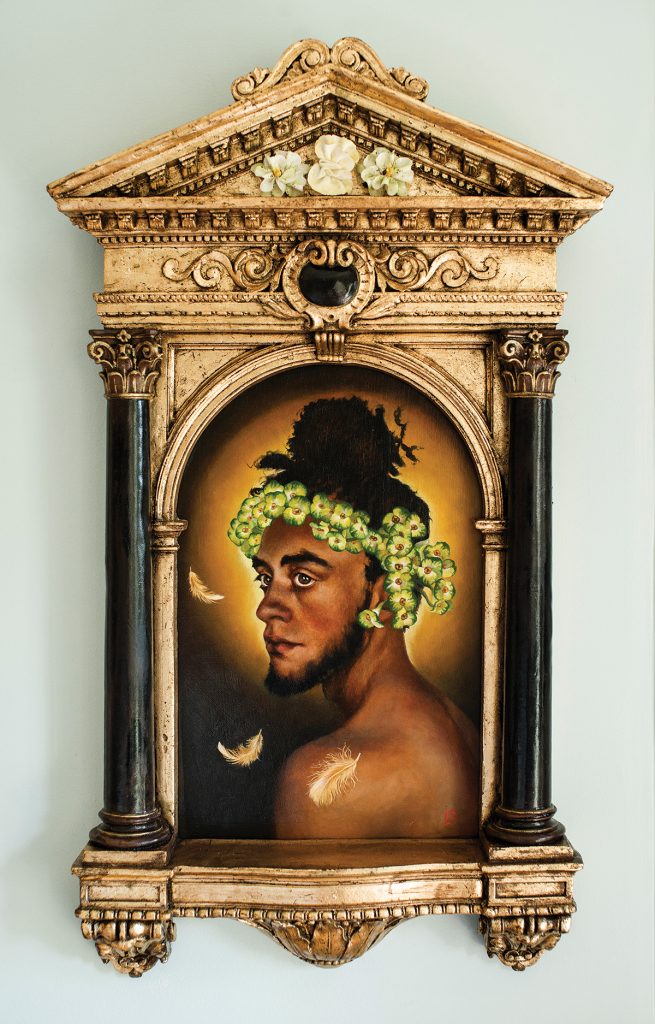When Lib Mason slipped out of a transactional relationship with art,things began to blossom. The portraitist moved from Charleston to
Brevard five years ago and completely changed how she painted portraits.

Portrait by Karin Strickland
She had been a commercial artist for years after graduating from Rhode Island School of Design. Mason worked as a professional editorial illustrator in NYC and Boston, for the likes of Rolling Stone, The Boston Globe, and Time Warner, and as a product developer of artist brand licensing for large international companies.
“I decided that I would try to do art for the first time without focusing on income, and that’s when I started the whimsical part of portraiture,” she says. “I wanted to see what I could do if I wasn’t aiming for income-based art, which always worked really well for the years that I did do that.”

So instead of making paintings of children to hang, stately but static, above their parents’ mantelpieces, Mason now devotes herself to works with dream colors and fanciful imagery overflowing with pop-culture references.
Her reputation as a portrait artist didn’t stop prospective buyers from reaching out to her. But she stopped setting up commissions to focus on building an entirely fresh body of work.

From her home studio, with its floor-to-ceiling windows that showcase her terraced garden of fragrant roses, Mason has painted nine pieces, with another almost done and three more started. Her subject “Flora” is decorated with flowers, herbs, and butterflies, and Flora’s sister “Fauna” is surrounded by rabbits, birds, and squirrels. Those works, already sold to a collector in Florida, have faces inspired by a pre-Renaissance Italian sculpture that Mason saw in the Metropolitan Museum of Art.

Another piece, Jolene and the Masked Cherubs, references the “Me Too” movement and features a predatory Pinocchio, his hand placed in an unwelcome position on a woman who wears a dress of Hello Kitty prints. Mason’s other sociopolitical pieces include Miss Information Got Out of Hand and an almost-completed work titled Death of Education.
“I learned that I have strong feelings about a lot of things and I need to paint them where they are a little creepy, but beautiful,” Mason says. “All of my paintings have that feel to them, where they are bizarre, but pretty. I like that look — a kind of classical satire.”

Her ideas can’t even be contained by her canvases anymore. When it comes to framing her pieces, Mason uses vintage relics and adds special touches, like the smiling flower emojis on the frame of The Art Student that complement the emojis in the painting.
As she began work on this new venture, Mason looked to the past, deep into art history; her research included reading a copy of the translated text Lost Secrets of Flemish Painting, written in the 17th century. “You have to take Ritalin to [be able to focus on] it,” she jokes.

Enhancing that feeling of authenticity, Mason even works with ancient products such as egg tempera and rabbit-skin glue. “I like the really classical look, but I want to morph it so it’s more peculiar,” she explains. “I think that adds a really neat element, so it’s not just a contemporary painting, which I want them to be, but [so that] they also have a very classical feel to them.”
Someday, she says, she may return to the life of creating commissioned likenesses — as long as her subjects don’t mind wearing wildflower head garlands or sharing their canvas space with dominoes, scrabble tiles, puppets, and other ephemera.
“If there’s a market out there for whimsical portraiture,” she says, “I think that would be fun to do.”
Lib Mason, Brevard. For more information, see libmasonportraits.com.